
Come sta l'Italia? / How is Italy doing? is a digital platform showcasing extreme climate events occurred in Italy since 1981.
The "health conditions" of the twenty Italian regions are visualised through a historical, climate and social analysis.
Climate change events are perceived as a world-scale problem: they can be difficult to comprehend for people who do not feel their impact on everyday life.
How is Italy doing? monitors the Italian territory with climate data from 1981 to nowadays, organised by indices developed by the European Extreme Events Climate Index. The indices (cold, heat, drought, precipitation and wind) provide information about the areas affected by different types of weather-induced hazards and the severity of such events.
Combining the E3CI indices with population data and land use, we obtain an analysis of Italy on a regional scale with a historical and climate perspective. Furthermore, by giving the opportunity to share memories to the users, we can validate events that might not be labeled as extreme but had anyway an impact on people.
AUTHORS:
Cinzia Bongino, Graphic, Information and Web Designer
The project was realised during a 24-hour hackathon held in Bologna, at the Unipol Tower, on the 17-18 January 2023 (we won the 3rd place). The event was organised by International Foundation Big Data and Artificial Intelligence for Human Development (IFAB), Leithà S.r.l., and Fondazione Centro Euro - Mediterraneo sui Cambiamenti Climatici (CMCC).
Interact with the prototype below: click anywhere on the page and a blue area will be highlighted.
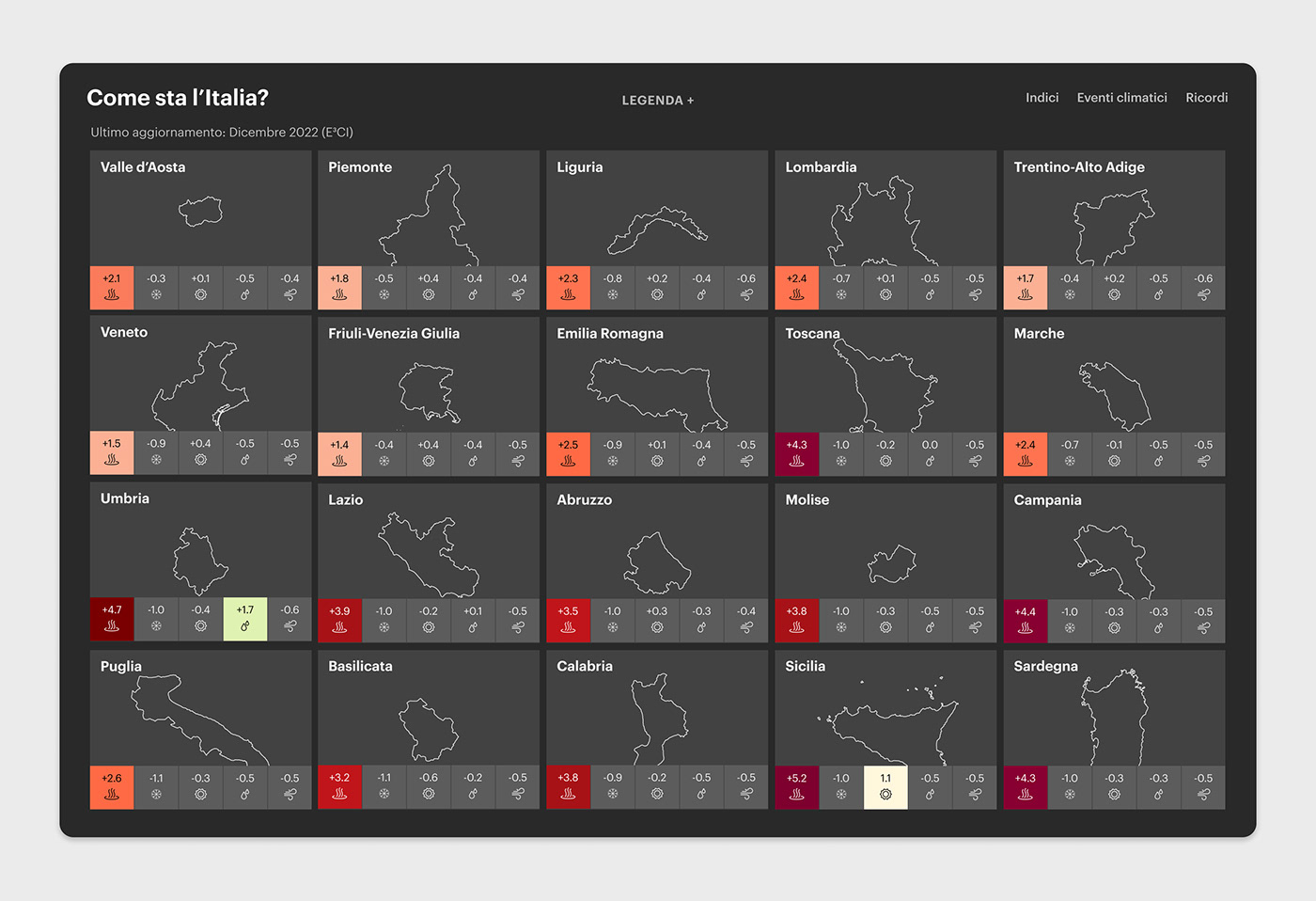
The homepage showcases the latest values for each region: the ones that are above the norm are highlighted with a specific colour. The higher the value, the more critical the weather event.
Five types of extreme weather events - heatwaves, cold spells, droughts, intense precipitation, and wind storms - are evaluated based on numerical indices. An event is considered extreme if it exceeds natural variability, as determined by statistical analysis, and corresponds to values exceeding 1. Note that the severity of an event is proportional to its numerical value, with higher values indicating rarer and more severe events.
These five indices compose the European Extreme Events Climate Index (E3CI). Data provided by CMCC.
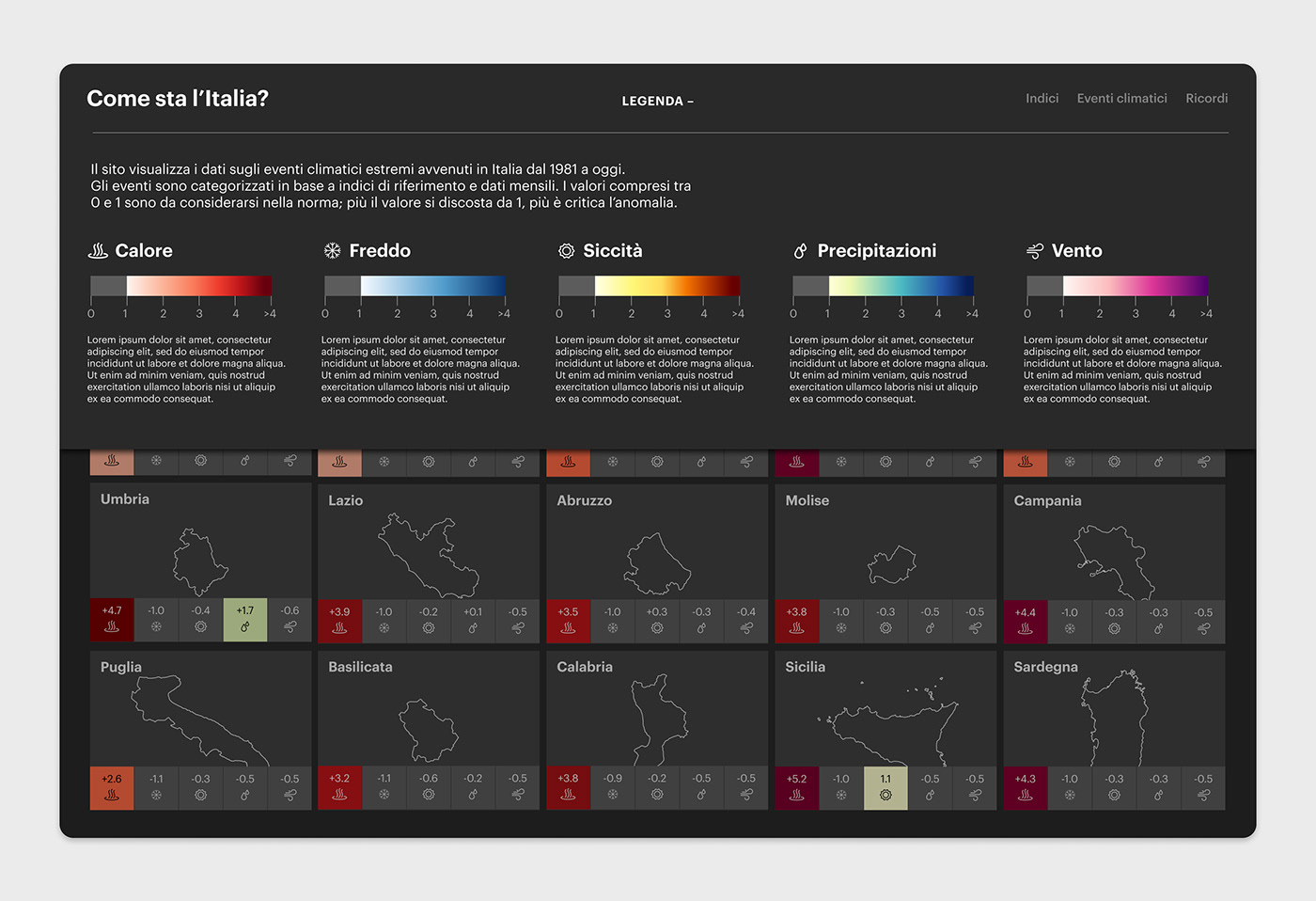
The legend displayes different color bars per indicator. Values between 0 and 1 are considered normal for the Index. Each indicator is expressed on the homepage both with the use of colour and icons to support people with visual impairment.

A map of the heatwave index for the Emilia-Romagna region in December 2022. The heatwave index – as all the other indices in this work – is computed on a grid. The dark red areas indicate higher values of the index: December 2022 has indeed been significantly warmer than the average December on the entire Italian territory. The accompanying time series illustrates the monthly heatwave index values for the Emilia-Romagna region, allowing for easy identification and comparison of extreme events. Aside, an auto-generated text sums-up the most important data.

A map of the wind storm index for the Emilia-Romagna region in December 2022. The absence of color in a large portion of the map indicates that no extreme wind storm events occurred in those areas; yet, some intense wind storms occurred at a local level.
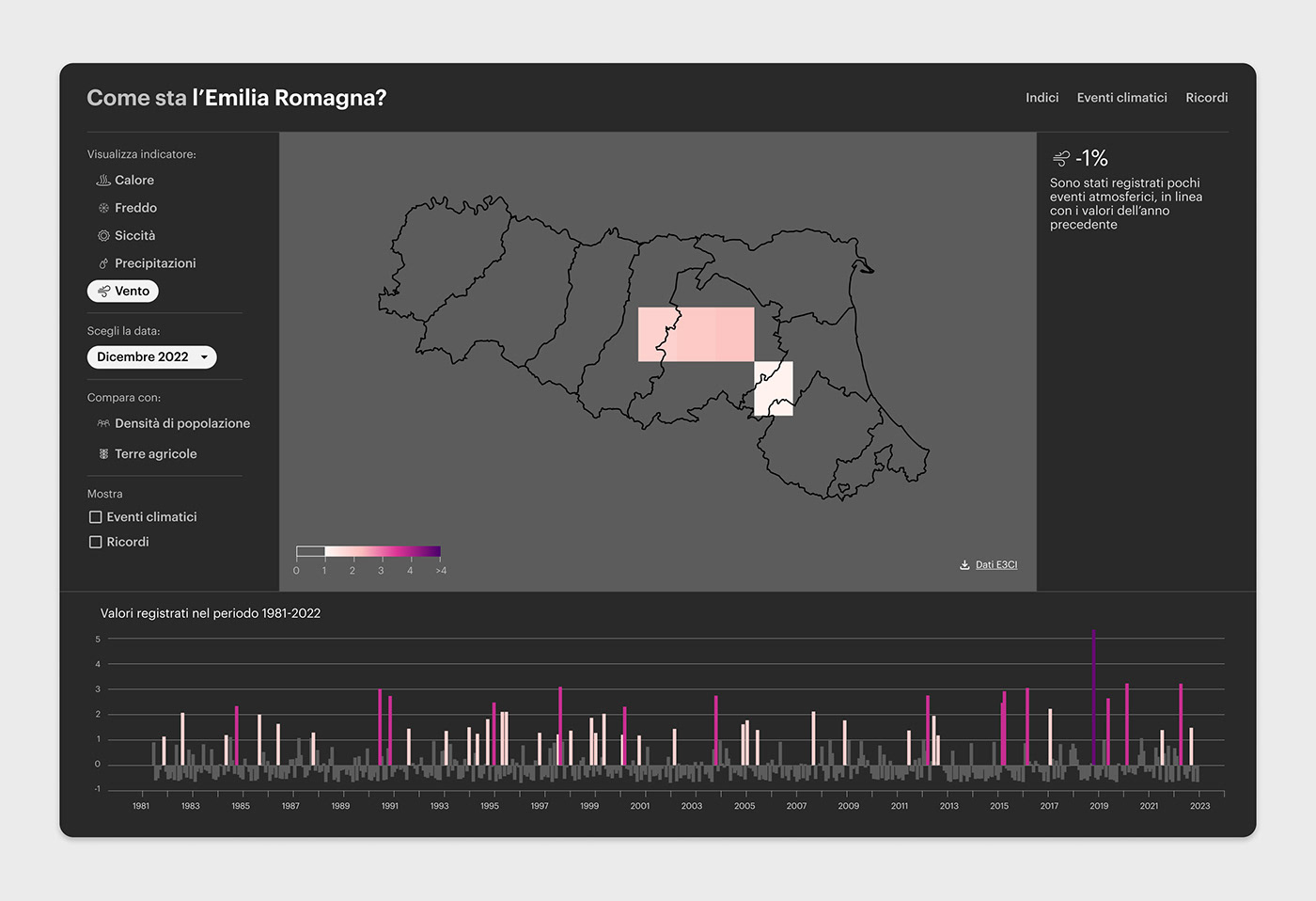
A map of the index for intense precipitation events for the Emilia-Romagna region in December 2022; during that month, intense precipitations were limited to a small area.
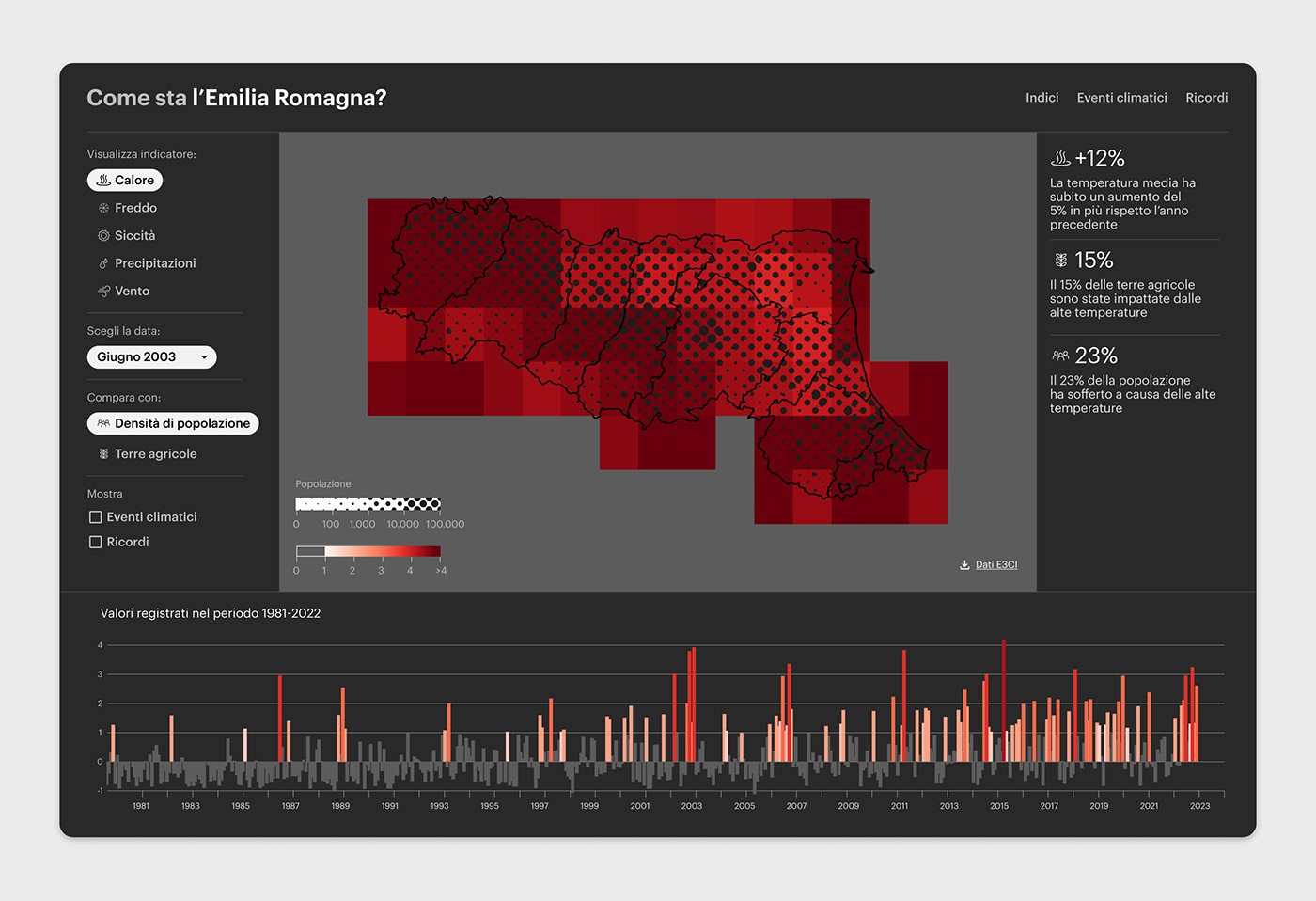
The indices describing extreme weather events can also provide insights about the past. For instance, the summer of 2003 was marked by widespread extreme heatwaves across Europe. This map illustrates the heatwave index for the Emilia-Romagna region during June 2003. It is interesting to compare the spatial distribution of the heatwave with that of the population: this is important information to estimate the number of people that have been exposed to such extreme temperatures.
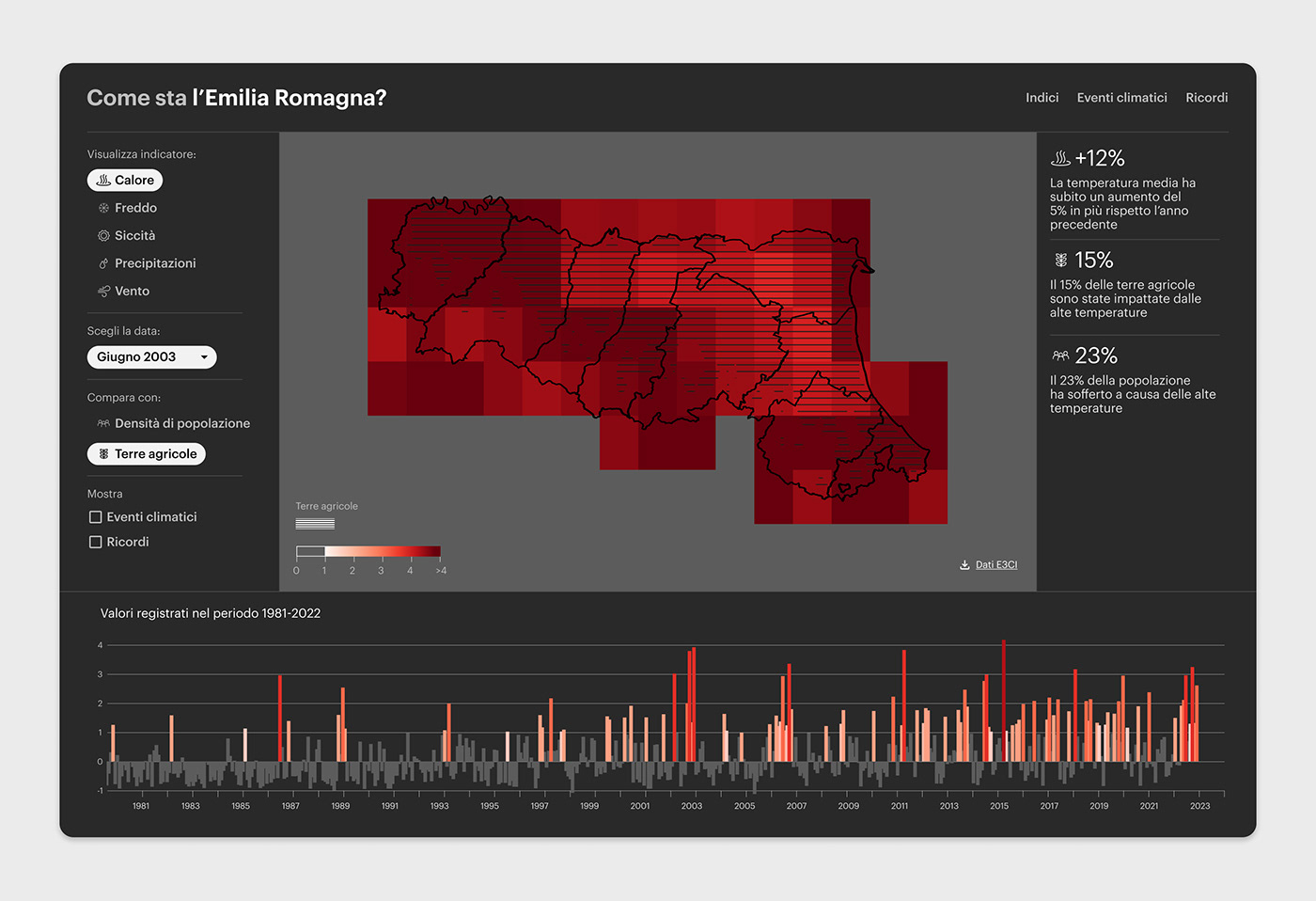
Extreme weather events can have a significant impact on human activities and supply chains, and particularly on agriculture. This comparison between the distribution of agricultural lands and the June 2003 heatwave index for the Emilia-Romagna region allows for identification of the areas where the agricultural sector has been most impacted by the event, which is crucial for assessing the economic and social impacts of heatwaves on farming communities and on the food sector.
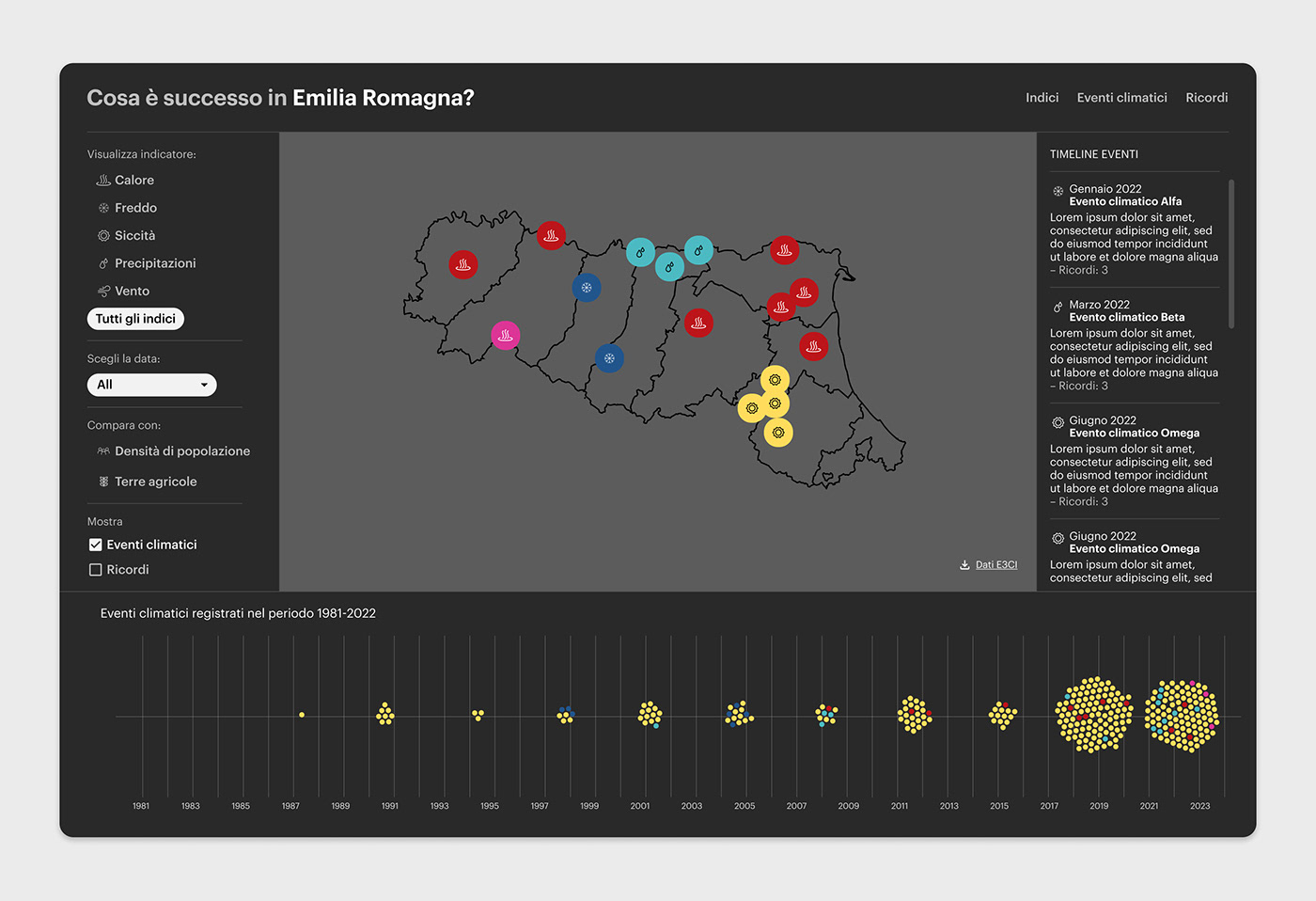
Users can also use the platform as an historical database of extreme climate events: each event is geolocated on the map and plotted on a Beeswarm chart below to show the trend over time.
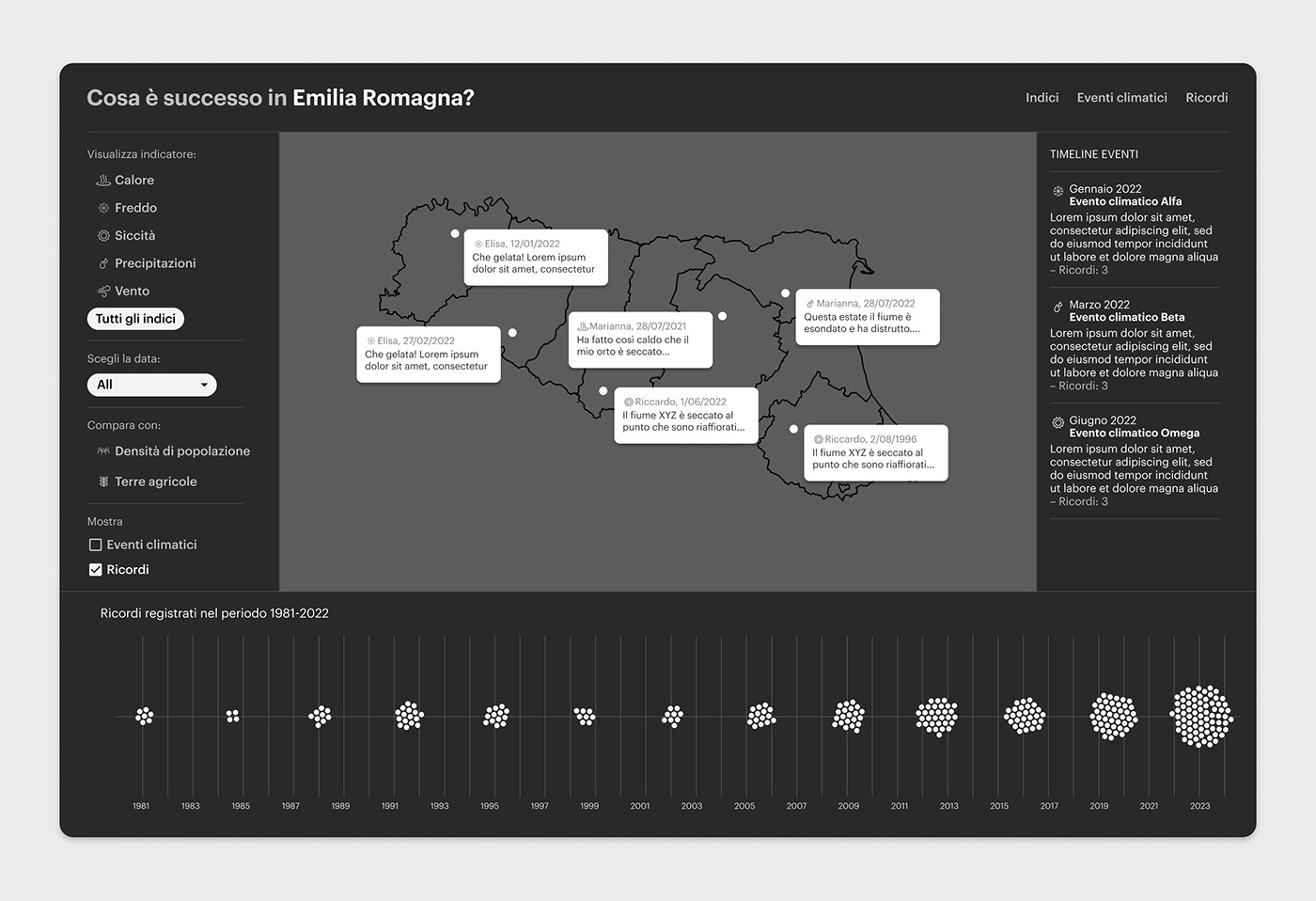
The platform allows users to share their personal experiences of extreme weather events. These memories provide a personal connection to the event, which can increase awareness of the impact of climate change on individuals and local communities. Additionally, these memories can be used by researchers to validate the accuracy of extreme weather indices and to gain a better understanding of the human experience of severe weather.
____
This project has been realised in one day (plus a few hours after the hackathon to refine some pages). It is based on real data shared by E3CI and combined with fictional information such as number of climate events or memories.
We are happy to get in touch if you are interested in developing this concept further on. Feel free to write us here:
fede.guerr@gmail.com
contact@cinziabongino.com




